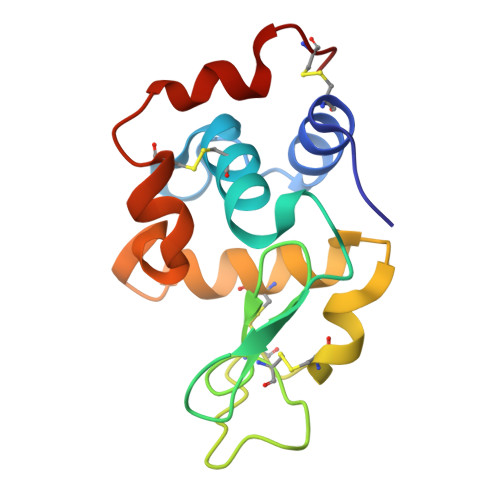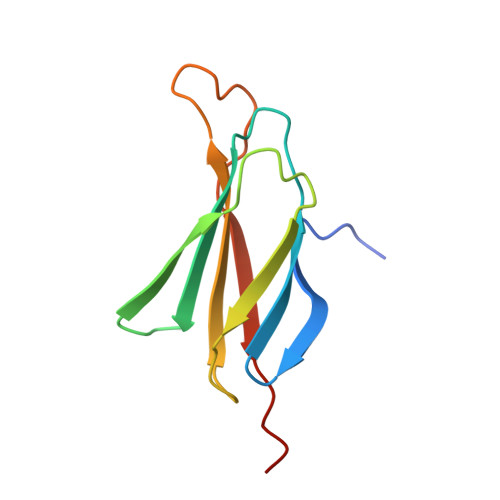Circumventing the stability-function trade-off in an engineered FN3 domain.
Porebski, B.T., Conroy, P.J., Drinkwater, N., Schofield, P., Vazquez-Lombardi, R., Hunter, M.R., Hoke, D.E., Christ, D., McGowan, S., Buckle, A.M.(2016) Protein Eng Des Sel
- PubMed: 27578887
- DOI: https://doi.org/10.1093/protein/gzw046
- Primary Citation of Related Structures:
5J7C, 5J7K - PubMed Abstract:
The favorable biophysical attributes of non-antibody scaffolds make them attractive alternatives to monoclonal antibodies. However, due to the well-known stability-function trade-off, these gains tend to be marginal after functional selection. A notable example is the fibronectin Type III (FN3) domain, FNfn10, which has been previously evolved to bind lysozyme with 1 pM affinity (FNfn10-α-lys), but suffers from poor thermodynamic and kinetic stability. To explore this stability-function compromise further, we grafted the lysozyme-binding loops from FNfn10-α-lys onto our previously engineered, ultra-stable FN3 scaffold, FN3con. The resulting variant (FN3con-α-lys) bound lysozyme with a markedly reduced affinity, but retained high levels of thermal stability. The crystal structure of FNfn10-α-lys in complex with lysozyme revealed unanticipated interactions at the protein-protein interface involving framework residues of FNfn10-α-lys, thus explaining the failure to transfer binding via loop grafting. Utilizing this structural information, we redesigned FN3con-α-lys and restored picomolar binding affinity to lysozyme, while maintaining thermodynamic stability (with a thermal melting temperature 2-fold higher than that of FNfn10-α-lys). FN3con therefore provides an exceptional window of stability to tolerate deleterious mutations, resulting in a substantial advantage for functional design. This study emphasizes the utility of consensus design for the generation of highly stable scaffolds for downstream protein engineering studies.
Organizational Affiliation:
Department of Biochemistry and Molecular Biology, Biomedicine Discovery Institute, Monash University, Clayton, VIC 3800, Australia.















